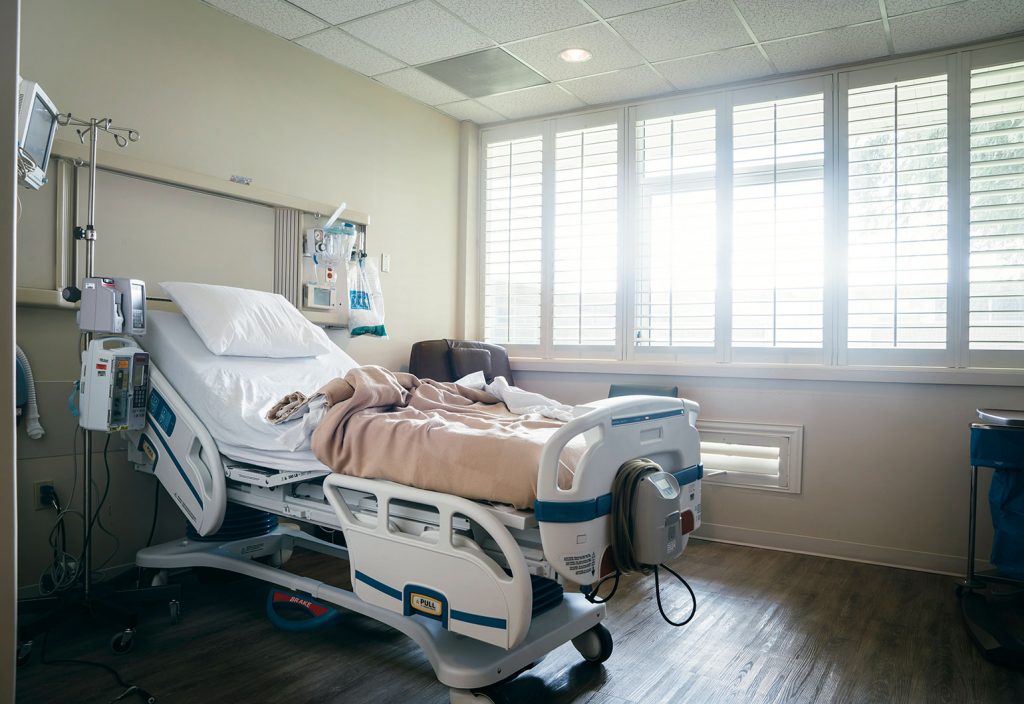Engineers have been called in to study the airflow in Brisbane’s Princess Alexandra Hospital, to assess whether air circulation was the cause of two separate COVID-19 clusters.
It comes after Brisbane went into a snap three-day lockdown just before Easter due to concern over local transmission of the virus.
Authorities suspect that an isolation room in the hospital’s Ward 5D, where two ‘super-spreader’ patients were cared for at different times in March, is a common link between the two clusters.
Queensland Health confirmed an engineering analysis will be conducted into the ward, which is currently closed, to examine “possible factors which may have contributed to virus transmission”.
“Ward 5D at the Princess Alexandra Hospital is currently undergoing a deep clean, including environmental testing, which is expected to be completed in coming days,” a spokesperson for Queensland’s Metro South Health told create.
“Following this, an engineering analysis of the area will be conducted to examine possible factors which may have contributed to virus transmission.
“Environmental measures are strong solutions to decrease transmission of infectious disease. Using professional engineers to test and design solutions to minimise transmission is a key part of this strategy.”
From all angles
There are multiple ways to assess air circulation in cases like this, Professor Jason Monty, Head of Mechanical Engineering at the University of Melbourne, told create.
First, ventilation experts will assess the health of a building’s ventilation system to make sure the filters are to the correct specifications and there is enough outside pressure coming in.
“All that is quite established and almost certainly already has been checked,” Monty said.
Less established is looking at where air goes inside the building. Air will follow pressure, which means it is important to deduce the pressure difference between one room and another, or a room and a hallway, in order to see where the air will go.
“Consultants look at air flow but not on a local level,” Monty said.
“The problem is this virus is locally transmitted, so you have to be quite close for transmission to occur. But where air goes over those short pathways has never been of any interest.”
This is particularly important in hospitals, where areas such as positive pressure rooms can have unintended effects. These rooms are used to keep vulnerable patients safe from infections and disease by allowing air to leave the room without circulating back in.
“We’ve done work in hospitals with positive pressure rooms for patients, where the infection coming from the patient ends up in the hallway,” Monty said.
“You want to avoid that, or at least be aware of it, so staff can be prepared for where the air is going to go.”
The ‘gold standard’ for analysing air circulation are tracer studies, which involve injecting an area with something — ideally smoke or nebulised aerosol — and tracking where the air goes.
“We have released smoke in a hospital, obviously somewhere where there were no patients and the smoke alarm was deactivated, and we’ve clearly seen that it’s gone in places we didn’t expect, in rates that might not have been what was expected,” Monty said.
Once the air has been traced, a number of environmental changes can be made depending on the issues that are identified.
This includes using portable air scrubbers, closing doors and changing ventilation rates in an attempt to reduce the amount of smoke travelling from one area to another.
“In my view air scrubbers are underutilised,” Monty said. “They’re very good at cleaning air very close to the source. We’ve shown they can protect healthcare workers in hospitals better than a building’s ventilation system.”
Stopping the spread of infection
Mask wearing, social distancing and the liberal use of hand sanitiser have become accepted ways to stop the spread of infectious diseases such as COVID-19. But Monty said engineers could also be at the forefront of infection control for places like hospitals, offices and other indoor spaces.
Traditionally, air circulation has been about keeping people comfortable, typically by tweaking a building’s ventilation system, but Monty said the pandemic showed the importance of engineers using their expertise to keep people safe.
“There’s potentially a whole new engineering industry to come out of this,” he said.
“It’s good to see more engineers with expertise are being engaged to understand where air goes, air pathways and be able to examine those.
“It’s fantastic to see ventilation systems are going to be potentially more than just about keeping people comfortable and doing it cheaply.”
